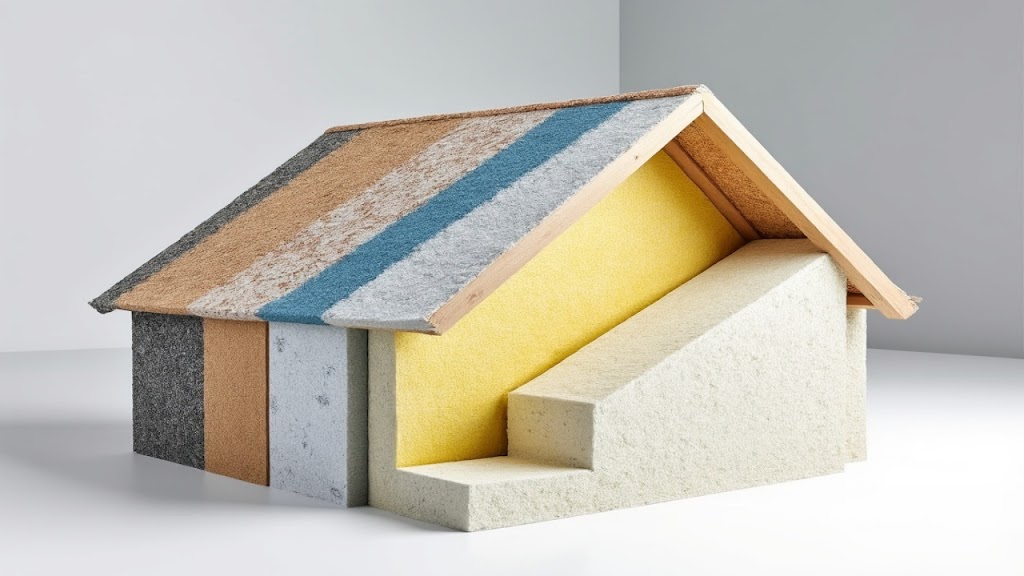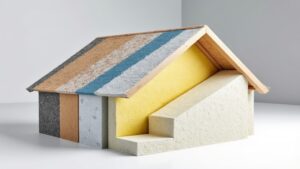Proper insulation is essential for maintaining a comfortable home and reducing energy bills. By selecting the right insulation materials, you can improve energy efficiency, keep your home at a stable temperature, and lower your utility expenses. This guide will explore the different types of insulation materials available, their benefits, and how to choose the best option for your home.
Discover how to choose the best insulation materials to reduce energy costs and improve home comfort. This guide covers various types of insulation, installation tips, and maintenance advice.
Understanding the Importance of Insulation
Why Insulation Matters
Insulation plays a crucial role in managing your home’s temperature. It acts as a barrier to heat flow, keeping warmth inside during the winter and outside during the summer. Effective insulation can also help:
- Reduce Energy Costs: By minimizing heat transfer, you decrease the need for heating and cooling, leading to lower energy bills.
- Improve Comfort: A well-insulated home maintains a consistent indoor temperature, enhancing overall comfort.
- Reduce Noise: Insulation can help in soundproofing your home by reducing noise from outside and between rooms.
Types of Insulation
Choosing the right insulation depends on various factors, including the climate, the part of the home being insulated, and your budget. Here’s an overview of the most common types of insulation materials:
Types of Insulation Materials
1. Fiberglass Insulation
Fiberglass insulation is one of the most popular types due to its effectiveness and affordability. It is made from fine glass fibers and comes in batts, rolls, or loose-fill.
- Pros:
- Good thermal performance
- Fire resistant
- Affordable and widely available
- Cons:
- Can be irritating to the skin and respiratory system
- Requires proper installation to avoid gaps
2. Foam Board Insulation
Foam board insulation, also known as rigid foam, provides high insulation value with minimal thickness. It is often used in walls, floors, and ceilings.
- Pros:
- High insulating value per inch
- Moisture resistant, making it ideal for areas prone to dampness
- Easy to install
- Cons:
- Can be more expensive than fiberglass
- Not as fire-resistant; may need a protective covering
3. Spray Foam Insulation
Spray foam insulation expands on application to fill gaps and voids, creating an effective air barrier. It is available in open-cell and closed-cell varieties.
- Pros:
- Excellent air sealing properties
- Expands to fill cracks and gaps, reducing air leaks
- Can improve structural integrity of the building
- Cons:
- Higher initial cost
- Requires professional installation
4. Cellulose Insulation
Cellulose insulation is made from recycled paper products and is treated with fire retardants. It is commonly used as loose-fill or blown-in insulation.
- Pros:
- Environmentally friendly
- Good thermal performance and air sealing
- Often more cost-effective than foam
- Cons:
- Can settle over time, reducing effectiveness
- May require professional installation for optimal results
5. Reflective or Radiant Barrier Insulation
Reflective or radiant barrier insulation reflects heat away from living spaces. It is often used in attics to reduce cooling costs.
- Pros:
- Effective at reducing heat gain in hot climates
- Easy to install in attic spaces
- Cons:
- Less effective in colder climates
- Limited use in other areas of the home
Choosing the Right Insulation
Evaluating Your Home’s Needs
When selecting insulation materials, consider the following factors to determine the best choice for your home:
- Climate: In colder climates, materials with high R-values (thermal resistance) like spray foam or fiberglass are preferable. In warmer climates, reflective barriers can be effective.
- Home Type: Different parts of the home (e.g., walls, attics, floors) may require different types of insulation.
- Budget: Consider both the initial cost and the long-term savings on energy bills.
Installation Considerations
Proper installation is crucial to the effectiveness of insulation. Poor installation can lead to gaps and reduced performance.
- Professional Installation: For materials like spray foam or complex installations, hiring a professional may be beneficial.
- DIY Installation: For simpler materials like fiberglass batts or foam board, a DIY approach might be feasible if you follow manufacturer instructions carefully.
Energy Efficiency Ratings
Look for insulation materials with good energy efficiency ratings. The R-value is a key metric, indicating the material’s thermal resistance. Higher R-values offer better insulation.
- R-Value Guidelines: In colder climates, aim for insulation with higher R-values (e.g., R-30 to R-60 in attics). In warmer climates, lower R-values may be sufficient.
Maintaining Insulation
Regular Inspections
Regularly inspect insulation to ensure it remains effective. Check for signs of damage or settling, especially in attics and crawl spaces.
- Check for Gaps: Ensure there are no gaps or areas where insulation may have shifted.
- Look for Moisture: Moisture can reduce insulation effectiveness and cause mold growth.
Upgrading Insulation
Consider upgrading insulation if you notice increased energy bills or reduced comfort. Newer materials and techniques may offer improved performance and energy savings.
- Improved Materials: Advances in insulation technology may provide better R-values and efficiency.
- Professional Assessment: A professional can assess your current insulation and recommend upgrades if necessary.
Conclusion
Effective insulation is a key component of a comfortable, energy-efficient home. By choosing the right materials and ensuring proper installation, you can significantly reduce your energy costs and enhance your home’s comfort. Regular maintenance and timely upgrades will help maintain the effectiveness of your insulation and ensure long-term benefits.
By following this comprehensive guide, you’ll be well-equipped to make informed decisions about insulation, ensuring a more energy-efficient and comfortable living space.

